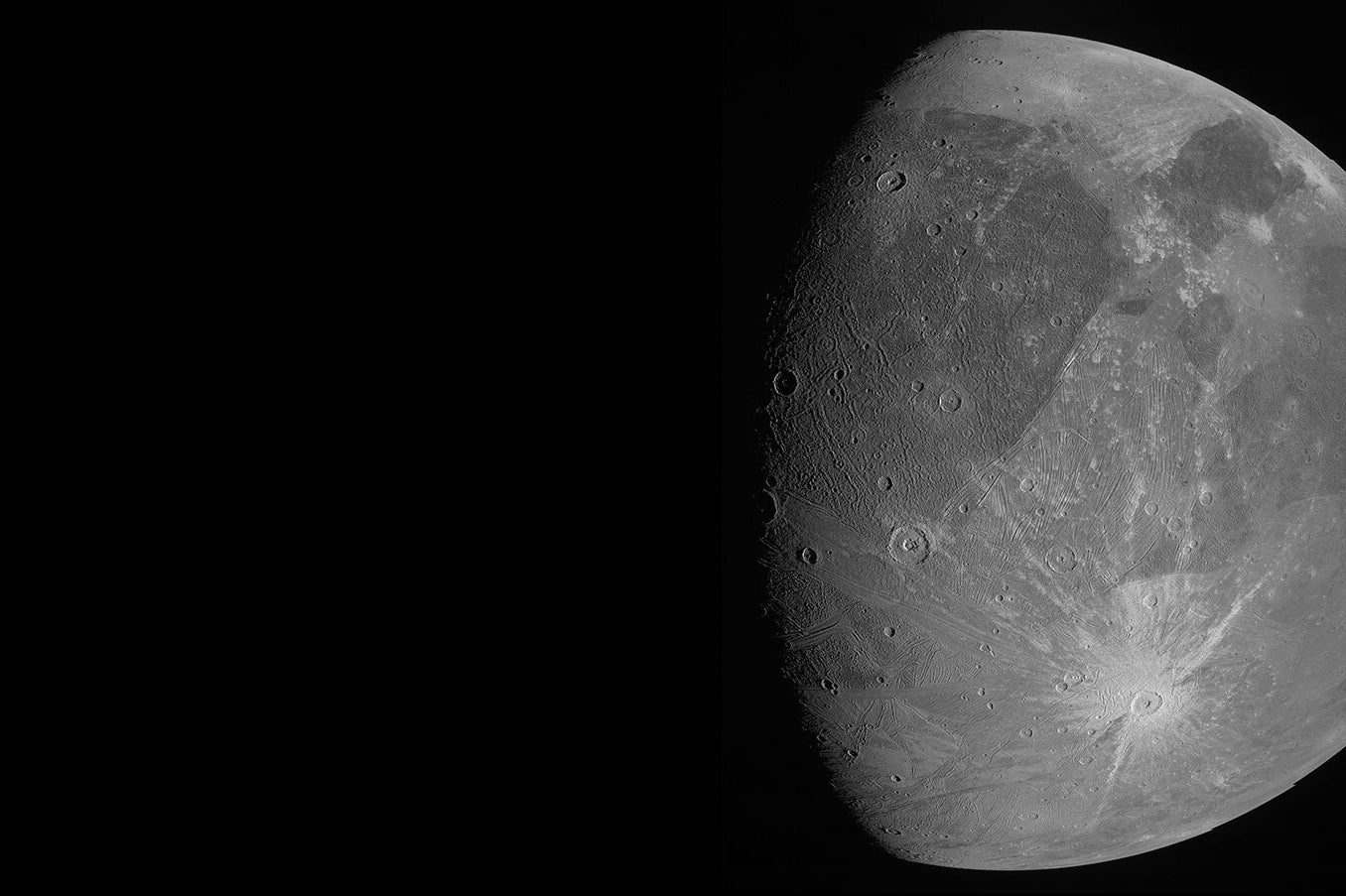Spacecraft buzzes Jupiter's mega moon, 1st close-up in years
NASA's Juno spacecraft has provided the first close-ups of Jupiter's largest moon in two decades

Your support helps us to tell the story
From reproductive rights to climate change to Big Tech, The Independent is on the ground when the story is developing. Whether it's investigating the financials of Elon Musk's pro-Trump PAC or producing our latest documentary, 'The A Word', which shines a light on the American women fighting for reproductive rights, we know how important it is to parse out the facts from the messaging.
At such a critical moment in US history, we need reporters on the ground. Your donation allows us to keep sending journalists to speak to both sides of the story.
The Independent is trusted by Americans across the entire political spectrum. And unlike many other quality news outlets, we choose not to lock Americans out of our reporting and analysis with paywalls. We believe quality journalism should be available to everyone, paid for by those who can afford it.
Your support makes all the difference.NASA’s Juno spacecraft has provided the first close-ups of Jupiter’s largest moon in two decades.
Juno zoomed past icy Ganymede on Monday, passing within 645 miles (1,038 kilometers). The last time a spacecraft came that close was in 2000 when NASA’s Galileo spacecraft swept past our solar system’s biggest moon.
NASA released Juno’s first two pictures Tuesday, highlighting Ganymede’s craters and long, narrow features possibly related to tectonic faults. One shows the moon's far side, opposite the sun.
“This is the closest any spacecraft has come to this mammoth moon in a generation,” said Juno's lead scientist, Scott Bolton of the Southwest Research Institute in San Antonio “We are going to take our time before we draw any scientific conclusions, but until then we can simply marvel at this celestial wonder – the only moon in our solar system bigger than the planet Mercury ”
Ganymede is one of 79 known moons around Jupiter a gas giant. Italian astronomer Galileo Galilei discovered Ganymede in 1610, along with Jupiter's three next-biggest moons.
Launched a decade ago, Juno has been orbiting Jupiter for five years.
___
The Associated Press Health and Science Department receives support from the Howard Hughes Medical Institute’s Department of Science Education. The AP is solely responsible for all content.